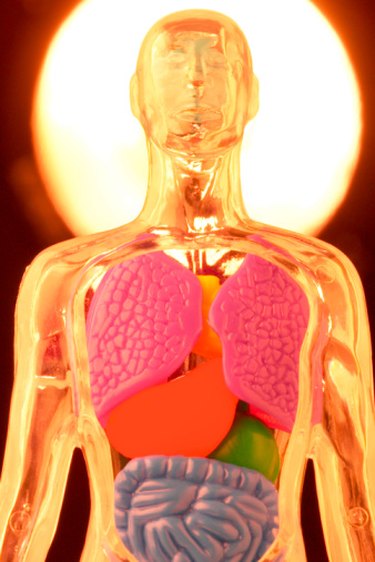
Visible light is undoubtedly a vital part of human life as it allows you to see the world using your eyes. This type of light is part of the electromagnetic spectrum of waves that the human eye can detect. While the essential need for visible light is very clear, it also has disadvantages in certain conditions or when not used properly.
Eye Health Problems
Video of the Day
The light you see has a wavelength within the range of about 380 nm to 780 nm and a frequency range of about 405 THz to 790 THz. The human eye can suffer from retinal injury due to overexposure to visible light. Although some damage can heal, more serious overexposure to visible light may lead to permanent eye damage or even blindness. This type of eye problem is caused by looking directly at something too bright like the sun.
Video of the Day
Vision-Related Accidents
The human eye's primary defense to damage due to overexposure to light is for it to close through the help of the eyelids. In some cases in which a person doesn't close her eyes right away prior to exposure to very bright light, this can cause temporary blindness. One vision-related accident that can happen is when a person is driving during the night, then another vehicle with high beams passes by from the opposite lane. This can cause the driver to close his eyes or experience temporary blindness if his eyes remain open during the incident. This can lead to a road accident.
Film Exposure Problems
Visible light affects films including those used in X-rays, film photography and movies. A film creates an image by using its chemical characteristics, which change according to how light strikes its surface. An X-ray machine or a film camera controls the light used for them. These films are protected from light through their containers. Accidentally removing them from these containers would result in exposure of the films, which would render them useless or cause permanent damage on the supposed image that should appear on them.
Deterioration of Materials
Visible light can cause chemical changes to different materials, which typically result in deterioration of their quality. Prolonged exposure to the light can result in a more weary look to these materials -- due to how light affects a material's molecular and chemical properties. This condition is especially evident in very old documents and photos like those historical ones archived in museums that tend to fade over time.
- School for Champions; Visible Light; Ron Kurtus; June 2002
- CliffsNotes: Characteristics of Light
- The Physics Classroom: Visible Light and the Eye's Response
- Universe Today; Visible Light; John Carl Villanueva; July 2009
- The Electromagnetic Spectrum: Visible Light
- National Aeronautics and Space Administration: Visible Light Waves
- Tutor Vista: Visible Light Waves
- Amazing Science: Star Light, Star Bright Teacher Page: Science Background
- WIndows to the Universe: Visible Light